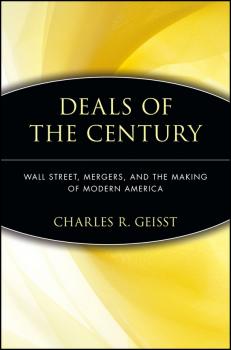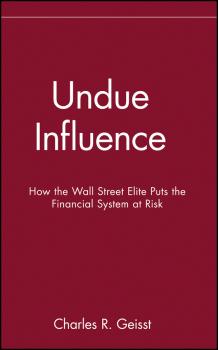ТОП просматриваемых книг сайта:
Charles Geisst R.
Список книг автора Charles Geisst R.Аннотация
DEALS OF THE CENTURY Throughout history, mergers and acquisitions have been the major game played on Wall Street. These deals have had far-reaching effects, on the worlds of finance and industry – more than most commentators or financiers are publicly willing to admit. Deals of the Century captures this dynamic moment in history by taking an in-depth look at the most notable merger and acquisition deals of the twentieth of Carnegie Steel in 1901 to the creation of the former AOL Time Warner, renowned business historian and bestselling author Charles Geisst traces the deals that have had the most dramatic impact on the worlds of both finance and industry over the past century. Decade by decade, you'll be introduced to the personalities behind each event, as industries are built, dismantled, and reorganized by «professionals» driven mainly by the profits extracted from the deals themselves. Engaging and informative, Deals of the Century paints an exciting portrait of the incredible M&A journey and illustrates how many of these deals changed the face of business, creating a modern capitalist society that continues to grow.
Аннотация
An intriguing history of the futures market and speculation From Jay Gould's attempt to corner the gold market in the 1860s to the Hunt brothers' scandalous efforts to control the silver market in the 1980s, Wheels of Fortune traces the rich, colorful history of the futures market on its quest for respectability and profit. This comprehensive account shows readers why the markets have been grabbing headlines for over 100 years as both respectable economic institutions and hotbeds of gambling activity and scandal. Charles Geisst brings the personalities and strategies behind the futures market and speculation in general to life, against a backdrop of American life that begins prior to the Civil War.
Аннотация
A critical look at over 80 years of conflict, collusion, and corruption between financiers and politicians Undue Influence paints a vivid portrait of the dealings between «the few», in this case members of Congress, the banking community, and the Fed, and sheds light on how radical new deregulatory measures could be introduced by unelected officials and then foisted upon Congress in the name of progress. In the process, the background of the new financial elite is examined-because they are markedly different than their predecessors of the 1920s and 1930s. Undue Influence also brings readers up to speed on other important issues, including how the financial elite has been able to perpetuate itself, how the markets lend themselves to these special interest groups, and how it is possible that after 80 years of financial regulation and regulatory bodies the same problems of financial malfeasance and fraud still plague the markets. Charles R. Geisst (Oradell, NJ) is the author of 15 books, including Wheels of Fortune (0-471-47973-X), Deals of the Century (0-471-26397-4) and the bestsellers Wall Street: A History and 100 Years of Wall Street. Geisst has taught both political science and finance, worked in banking and finance on Wall Street and in London, as well as consulted. His articles have been published in the International Herald Tribune, Neue Zurcher Zeitung, Newsday, Wall Street Journal, and Euromoney.
Аннотация
Sometime in the 1970s and 1980s, the use of credit cards, which had begun as a convenience, began to grow into an addiction. Collateral Damaged: The Marketing of Consumer Debt to America explains how a nation of savers became a nation of consumers and how Wall Street used consumers' addiction to spending to create the «toxic securities» that threaten to bring about the collapse of the global economy. Geisst looks at the policy implications of the credit crisis and describes how the United States can get its fiscal house in order: Debt must be brought back onto the issuer's balance sheet. Investors must have the assurance of recourse to the debt issuer's own funds, rather than the empty promise of a valueless document. Regulators must be educated to know at least as much about financial engineering as the structured finance instruments' architects do. This book connects the dots from consumer spending to credit cards to home-equity loans and back to credit cards.




